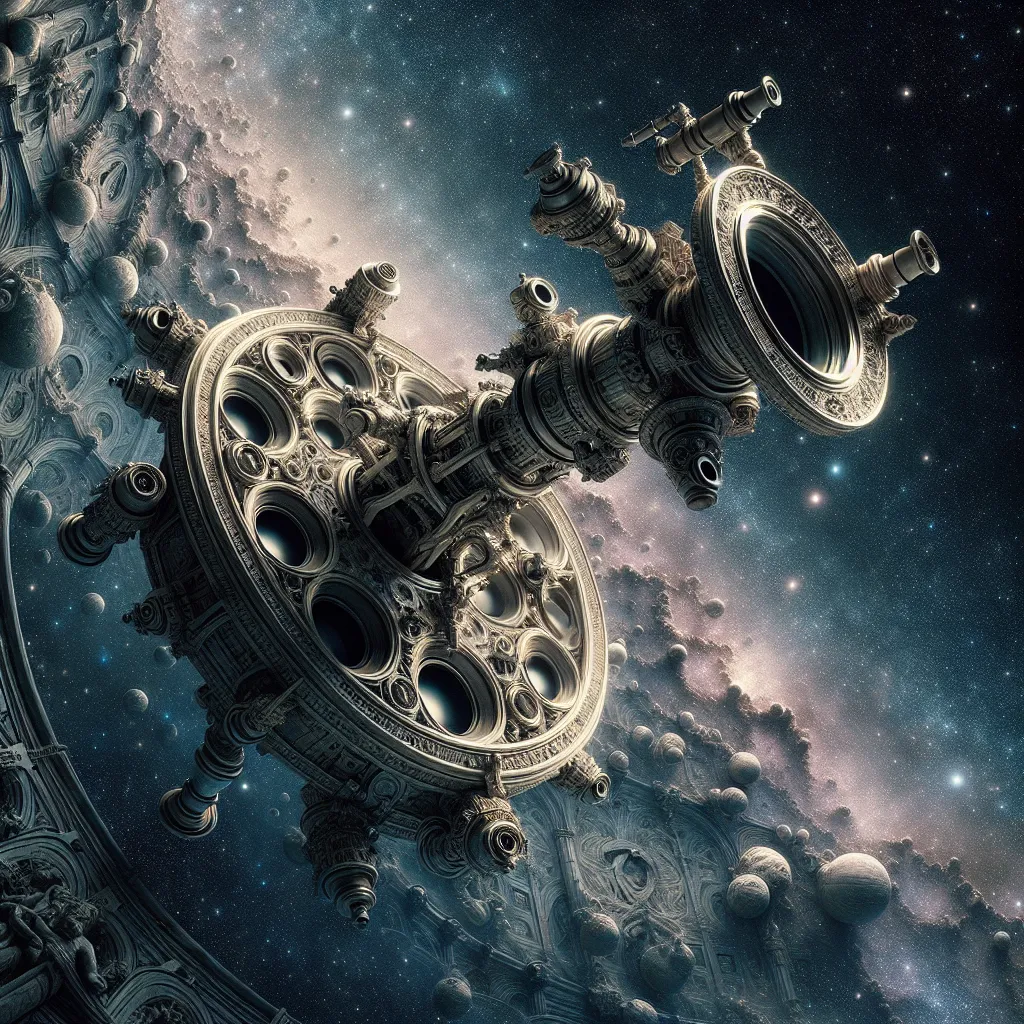The Potential of Space-Based Telescopes in Advancing Our Understanding of the Cosmos
 Quantum Cyber Solutions
Quantum Cyber Solutions
Published on
Monday, March 18, 2024
The Potential of Space-Based Telescopes in Advancing Our Understanding of the Cosmos
========================================================================================
Authors

Name
Elon Tusk 😄
Twitter
The Potential of Space-Based Telescopes in Advancing Our Understanding of the Cosmos
Humans have always been fascinated by the night sky, and over the centuries, our tools for stargazing have evolved dramatically. From simple ground-based telescopes to cutting-edge space telescopes, our quest to understand the cosmos has driven some of the most incredible technological advancements in history. But what makes space-based telescopes so revolutionary? How are they expanding our knowledge of the universe? Let's embark on this cosmic journey to explore the untapped potential of these celestial observatories.
A New Frontier in Astronomy
With the launch of the Hubble Space Telescope in 1990, the realm of astronomical observation entered a new age. Unlike traditional ground-based telescopes, space-based telescopes operate outside Earth's atmosphere, eliminating the distortion caused by atmospheric turbulence and providing clearer, deeper, and more detailed images of the cosmos. This clarity allows astronomers to observe phenomena that were previously beyond our reach or too faint to detect.
Hubble's Monumental Contributions
The Hubble Space Telescope has arguably been one of the most significant instruments in the history of astronomy. Its contributions include:
- Deep Field Imaging: Revealing galaxies billions of light-years away.
- Exoplanet Discovery: Detecting atmospheres around distant worlds.
- Dark Energy and Dark Matter: Offering insights into the mysterious components of our universe.
- Stellar Life Cycles: Observing stars in various stages of birth and death.
These breakthroughs have not only expanded our knowledge but have also raised new questions, driving further innovation and curiosity.
The James Webb Space Telescope: A Successor to Hubble
Scheduled for launch in late 2021, the James Webb Space Telescope (JWST) promises to take our cosmic exploration to new heights. As an infrared telescope, JWST will be able to peer through dust clouds and uncover regions of space previously hidden from view.
Key Features of JWST
- Infrared Vision: Allowing the study of the universe's most ancient light.
- Advanced Imaging and Spectroscopy: Enabling detailed analysis of exoplanets, galaxies, and nebulae.
- Large Mirrors and Sunshield: Ensuring better resolution and sensitivity than Hubble.
JWST's capabilities are expected to drive fundamental advances in our understanding of galaxy formation, star birth, and the search for life beyond Earth. The telescope's potential to reveal the early stages of the universe will help astronomers piece together the 13.8-billion-year cosmic puzzle with unprecedented precision.
Beyond Webb: The Future of Space Telescopes
The advancements in space-based telescopes do not end with JWST. Several ambitious projects are in the pipeline, each pushing the boundaries of technology and our understanding of the universe.
LUVOIR: The Large Ultraviolet Optical Infrared Surveyor
- Multi-Wavelength Capabilities: It will observe ultraviolet, visible, and infrared light.
- Exoplanet Exploration: Capable of detecting biosignatures in exoplanet atmospheres.
- High Resolution: Will significantly surpass Hubble's imaging capabilities.
The Roman Space Telescope
- Dark Energy Mission: Aiming to map the distribution of dark energy in the universe.
- Wide-Field Imaging: Providing a more extensive view of the cosmos compared to Hubble and JWST.
These upcoming telescopes will delve deeper into the mysteries of dark energy and dark matter, sharpen our understanding of galaxy evolution, and accelerate the search for potentially habitable exoplanets.
The Broader Impact of Space-Based Telescopes
Space-based telescopes have implications far beyond academic research. Their technological advancements cascade into other fields, driving innovation in optics, materials science, and computational techniques. Moreover, the awe-inspiring images and discoveries from these telescopes enrich our collective imagination, inspiring future generations to pursue careers in science and engineering.
Conclusion
Space-based telescopes have not only revolutionized the field of astronomy but have also captured the public's imagination. As we build and deploy ever-more sophisticated instruments, our window into the cosmos continually expands, bringing the mysteries of the universe closer to home. With each new discovery, we edge closer to answering some of humanity's most profound questions: How did the universe begin? Is there life beyond Earth? What is the true nature of dark matter and dark energy?
Stay tuned as we continue to push the frontiers of cosmic discovery. The cosmos awaits, and our journey is just beginning.
Discuss on Twitter • View on GitHub
Tags
Previous Article
Next Article
Subscribe to my newsletter
Read articles from Quantum Cyber Solutions directly inside your inbox. Subscribe to the newsletter, and don't miss out.
Written by
